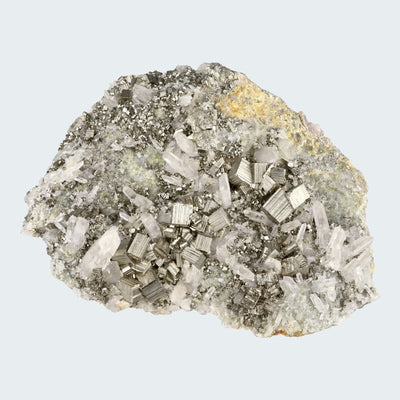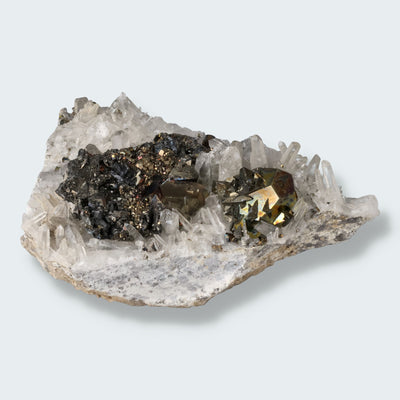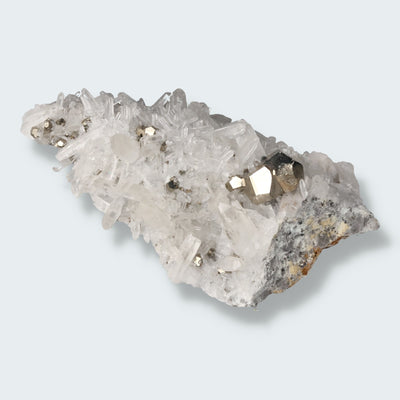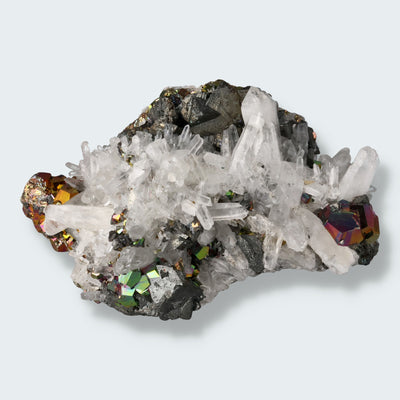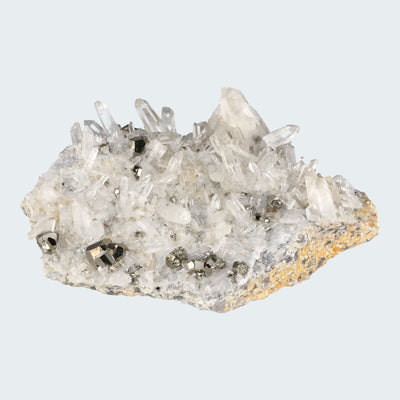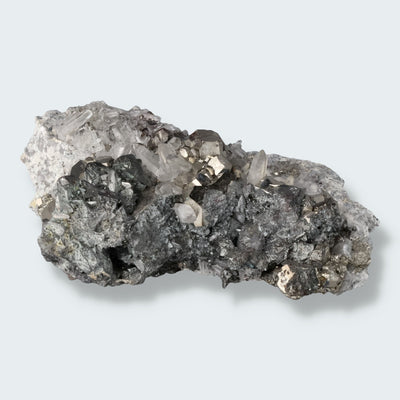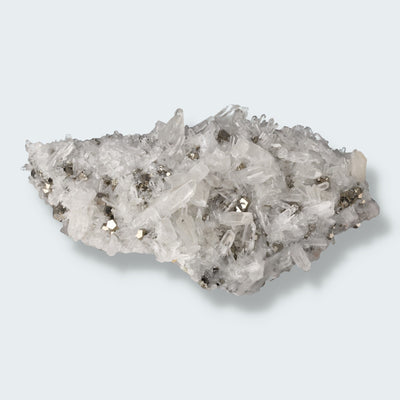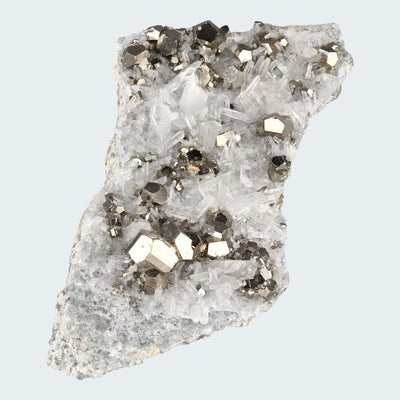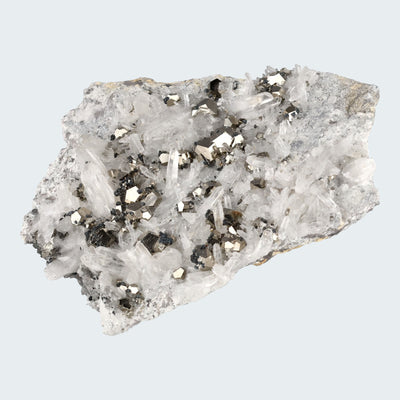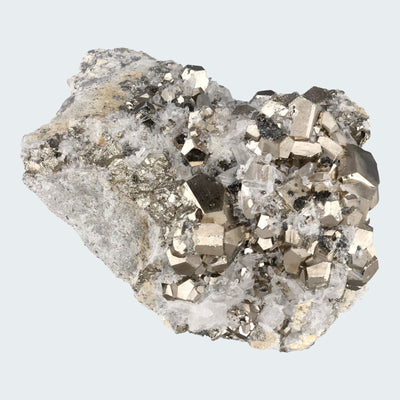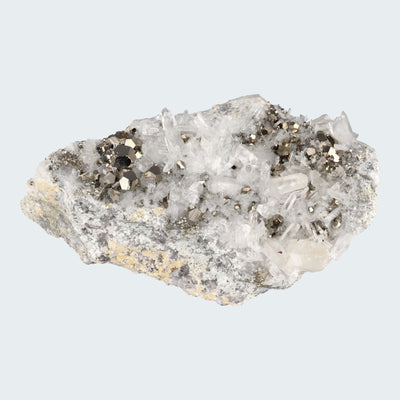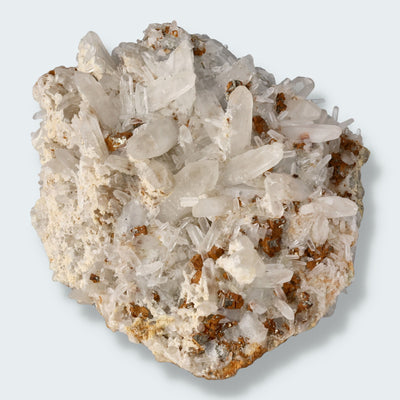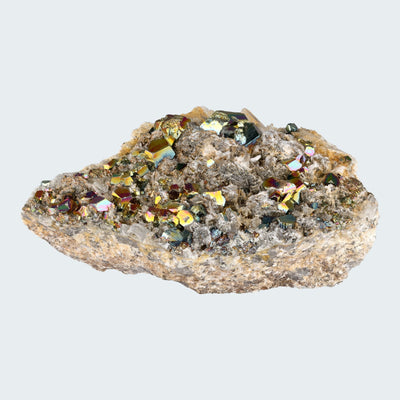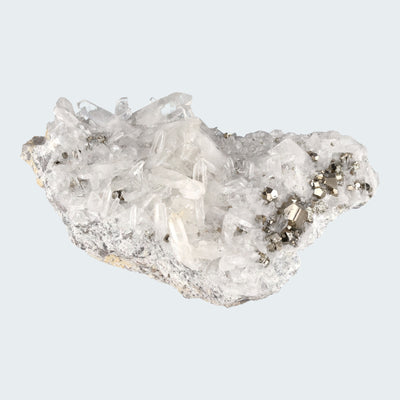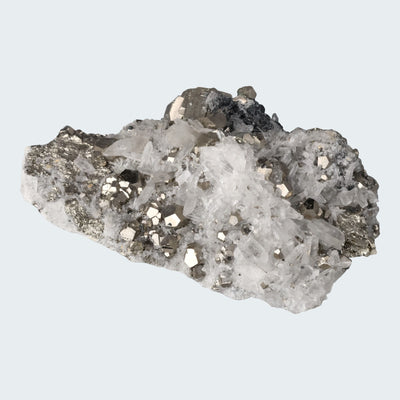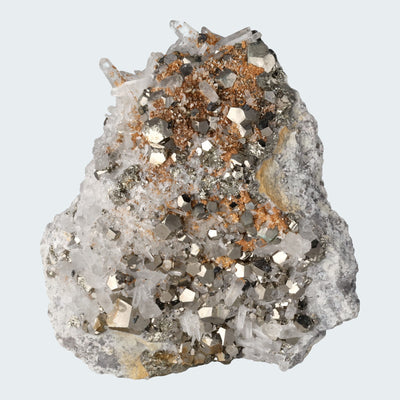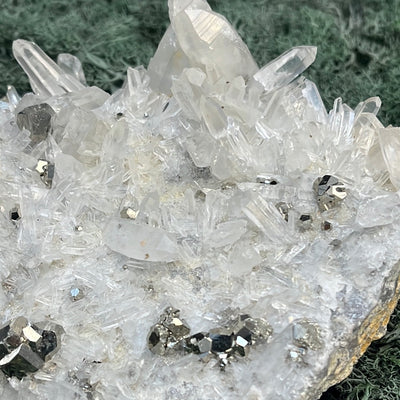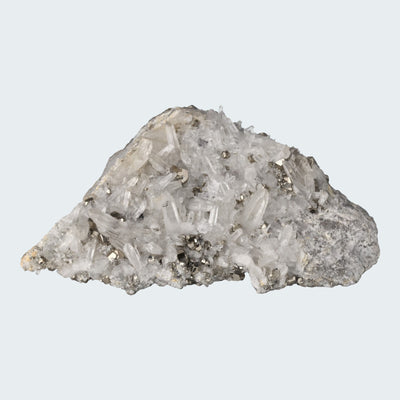
Pyrite
Filter and sort
The Pyrite , also known as pyrite or iron ore known, is a very common mineral from the class of Sulfides and sulfosalts . Pyrite is also known as “fool’s gold” or “iron sulfide”.
Chemically, it is the cubic modification of Iron(II) disulfide (FeS ₂ ) and thus consists of iron and sulphur in a ratio of 1:2. Pyrite is in any form opaque ( opaque ) and develops predominantly idiomorphic crystals in the form of dice or Pentagon dodecahedrons . Also octahedron and disdodecahedron are common, as are combinations between these forms. The crystal faces often show a characteristic stripes and when fresh a lively metallic shine . With a Mohs hardness from 6 to 6.5 Pyrite is one of the hard minerals that, like the reference mineral orthoclase, can just about be scratched with a file.
Category: Sulfide mineral
Formula: FeS21
Crystal system: Cubic
Mohs hardness: 6–6.5
Density: 4.8–5 g/cm
Color: Pale brass yellow, reflective; darker and iridescent tint
Shine: Metallic, shiny
Stripe color: Greenish-black to brownish-black
Pyrite is the most common sulfide mineral. It is often confused with gold, hence the nickname “fool’s gold.” Nevertheless, pyrite is sometimes found in association with small amounts of gold.
Pyrite was once used as a source of sulfur, but is now only a minor ore for sulfur and iron. Pyrite was polished by the indigenous people in earlier times and used as a mirror.


